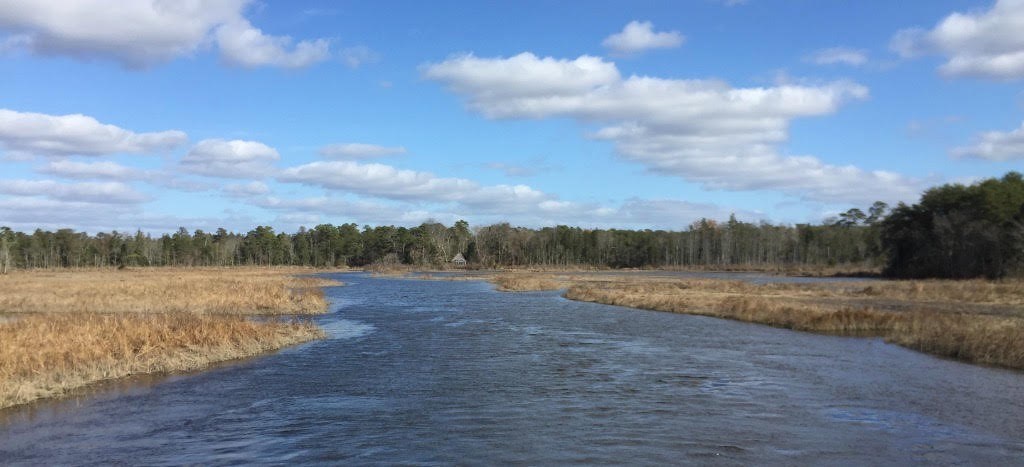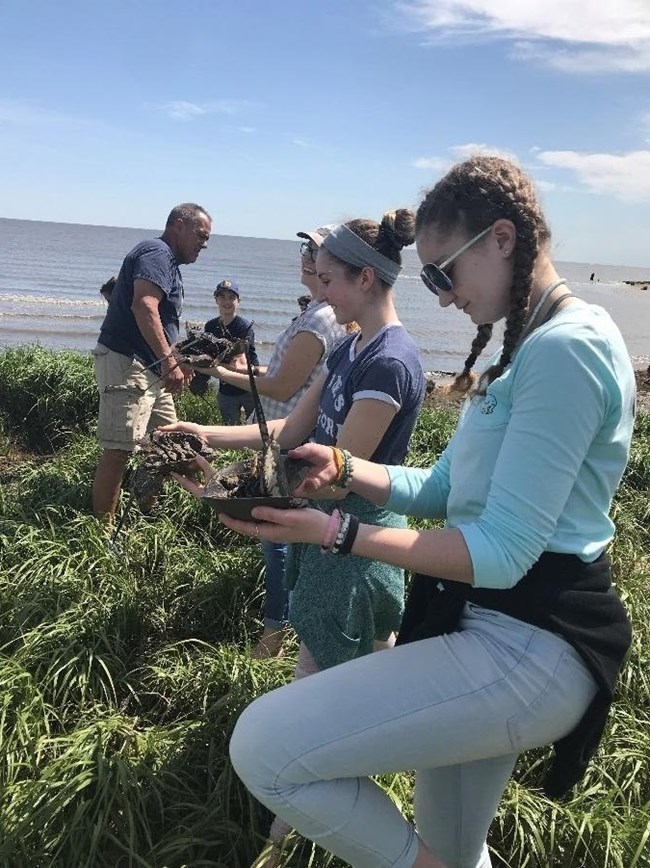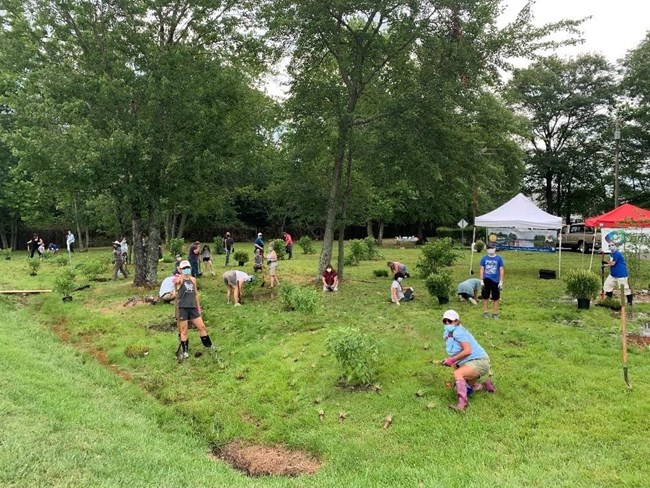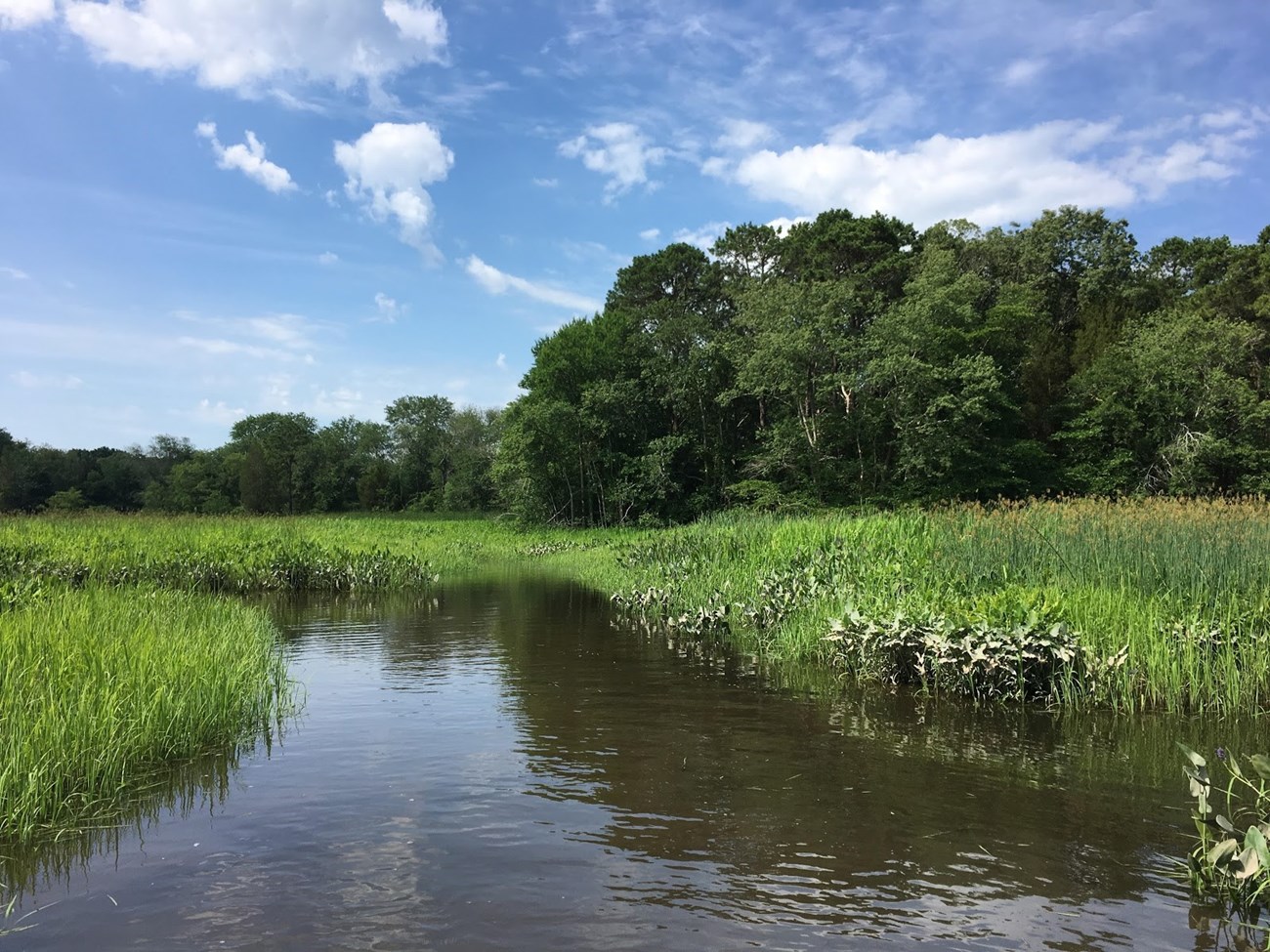Last updated: January 4, 2021
Article
Partnership Spotlight | CU Maurice River Volunteers Making a Difference
By Karla Rossini, CU Maurice River Program Manager
Citizens United to Protect the Maurice River and Its Tributaries, Inc. (CU Maurice River) is dedicated to protecting the watershed of the Maurice River and the region known as Down Jersey, thereby enabling current and future generations to enjoy the environmental, recreational, cultural, and scenic resources of this Wild & Scenic global treasure. Our organization empowers individuals, organizations, and neighboring communities to promote the region’s enduring well-being and quality of life. We invite participation and foster responsible stewardship.

The Wild and Scenic Maurice River’s watershed has remarkable biodiversity, and its marshes support 53% of the species listed on NJ’s endangered list. Using the Preliminary Healthy Watershed Assessment (PHWA) framework developed by the Environmental Protection Agency (EPA), six of the Maurice River’s thirteen HUC 12 sub-watersheds were considered to be within the top 25% of NJ’s healthiest watersheds; the Manumuskin River was among the state’s top five healthiest watersheds using the same criteria. Here at CU Maurice River, we feel fortunate to have a robust team of volunteers who go above and beyond to protect the outstandingly remarkable resources of the watershed and to share their love of nature with the next generation of stewards.
Collectively, CU Maurice River members and friends volunteer just shy of 10,000 hours per year. They breathe life into essential programs that protect the integrity of the system including wildlife management, habitat restoration, green infrastructure installations, experiential learning, citizen (community) science, urban greening, and so many more projects. We have selected three projects that have highly benefited by the dedication of CU Maurice River’s volunteer team.
ReTURN the Favor Horseshoe Crab Rescue
The Delaware Bay region has played host to the world's largest concentration of breeding horseshoe crabs for millions of years. But since the early 1990s, the species has experienced a rapid decline due to over-harvesting. Furthermore, thousands of horseshoe crabs are lost every year after being overturned by waves or becoming trapped by natural or manmade hazards. When trapped on the beach they are unable to return to the water and succumb to late spring’s heat or predators.
To address this problem, the ReTURN the Favor program was developed in May of 2013. Led by The New Jersey Division of Fish & Wildlife, The Wetlands Institute, and The Western Hemisphere Shorebird Reserve Network, it allows sanctioned volunteer groups to rescue stranded horseshoe crabs from the beaches. Partner activities are coordinated to minimize impact during shorebird migration and horseshoe crab spawning, as well as to follow the State policies preventing the disturbance of migratory shorebirds.

This volunteer opportunity not only teaches participants firsthand about these compelling creatures living in the littoral depths but also engages them with the preservation of a natural phenomenon that happens every spring on the Delaware Bay. Since the beginning of the program, CU Maurice River has been a fundamental partner in getting hundreds of walk leaders involved. Each year we host a mandatory training session for potential program participants. People have called in to register from as far away as Canada and Texas. After attending, volunteers receive the required permitting to lead program walks.
As an official partner, CU Maurice River has "adopted" as our primary rescue area the beaches around the East Point Lighthouse. From May until June, volunteers venture out to the beaches to save horseshoe crabs three hours after high tide - no matter if that is at 4:00 p.m. or 2:00 a.m. As a group, CU Maurice River volunteer walk leaders dedicate hundreds of hours to restoring the horseshoe crab population to historic numbers. As designated walk leaders holding permits, they invite friends and family to join them in freeing the crabs from impingements and ReTurning them to the waters of the bay while also collecting invaluable data for formal research and conservation efforts.
Dragonfly Mercury Project Data Collection on the Wild and Scenic Maurice River
Since 2011 the University of Maine, in partnership with the United States Geological Survey (USGS), and the National Park Service, has been conducting a nationwide study on mercury contamination in America’s natural resources. This project involves collecting dragonfly nymphs and analyzing them for mercury to better understand this contaminant’s distribution in the United States. Since 2015 CU Maurice River’s volunteer citizen scientists have been collecting data on the Wild and Scenic Maurice River.
Much of the mercury found in the atmosphere is a result of human activities, including gold mining and coal burning. According to the Environmental Protection Agency (EPA), coal burning to generate electricity is the largest source of these emissions in the United States. Elemental mercury is present in coal. Once the coal is burned, the mercury is released into the atmosphere. Wind currents can carry it long distances crossing city, county, state, and even national borders. Air deposition through precipitation or gravity causes this element to fall to the ground, covering communities as well as natural habitats. There it works its way into the water and soil. Elemental mercury is converted into a toxic form called methylmercury by microscopic organisms in aquatic habitats like rivers, lakes, and wetlands where it persists unchanged as a toxin, working its way into the food web. Bioaccumulation occurs when an organism ingests a contaminant faster than it can eliminate the substance from its body, which leads to build-up over time. When a species higher on the food chain consumes that organism, the contaminant is biomagnified, meaning it becomes more concentrated each time the next species ingests it. In this fashion, methylmercury (a neurotoxin) continues moving its way up through the food web, growing in concentration and, consequently, becoming more detrimental to larger predators. For this study, dragonfly nymphs are collected because they are predators that consume a wide variety of aquatic lifeforms, making them an ideal indicator species in understanding mercury contamination trends and the health of aquatic ecosystems.

So far, over 4,000 citizen scientists have volunteered to collect nymphs at more than 100 National Park Units, including Wild and Scenic Rivers. This goes to show the power of ordinary volunteers, in making a difference for a greener, healthier tomorrow. As a local project partner and National Park Service Partnership Organization, CU Maurice River volunteers have been contributing to this project by sampling for dragonfly nymphs on the Wild and Scenic Maurice River and its tributaries since 2015. Since then, well over 200 volunteers have been engaged in the project and to generating a better understanding of mercury deposition in the Maurice River’s watershed.
CU Maurice River’s team of citizen scientists have sampled at six different sites on 18 different occasions. The sites have included the Muskee Creek, Menantico River, the Manumuskin River and the mainstem Maurice River. On a sampling day, the volunteers are divided into three groups: the Draggers, the Baggers, and the Flaggers, each with differing tasks. The Draggers are the water group who slog through the river while utilizing a dip net in search of dragonfly nymphs. The Draggers hand their net contents over to the Baggers on the riverbank, who will then pick out the dragonfly larvae from other river creatures, carefully place the specimens into containers of river water where they are cleaned before bagging. Finally, there are the Flaggers who are in charge of identifying the dragonfly species and taking measurements. The specimens are then sent into the University of Maine where the team of researchers process specimens and analyze the data.
For more information on the assessment of the data collected by citizen scientists, you can read the recently published paper.
Building a Culture of Stewardship with Green Infrastructure Projects
At the end of 2019, CU Maurice River was granted funding by National Fish and Wildlife through its Delaware Watershed Conservation Fund to continue growing a culture of stewardship within the commercial and non-profit communities of the Wild and Scenic Maurice River basin. By the end of 2021, this program will implement four green infrastructure demonstration examples in Millville’s downtown area. Each of these initiatives will be visible models from which the professional community can profit via their peers’ experience with conservation projects.
In the New Jersey Water Supply Plan 2017-2022 the Maurice River’s Watershed Management Area (WMA) is identified as having the highest deficit for potable water in the State. This plan projects that by 2020, WMA 17’s remaining water availability will be -58.5mgd. Using the EPA’s Preliminary Healthy Watersheds Assessments (PHWA), eight of the nine subwatersheds north of the Wild and Scenic designated area fall within NJ’s 25% most vulnerable waterways when impacts stemming from water demand are projected. Meanwhile, the resource-rich southern sub-watersheds are being stressed by the demand in the northern region. In this scenario, current water consumption trends and water management practices are competing with the preservation of aquatic ecosystems.

Millville is the Maurice River Watershed’s second most populated urban area, and it has one of the watershed’s highest concentrations of impervious surface coverage. Rainwater falls on these impervious surfaces, picking up man-made contaminants, sediment, litter, and other solids as it is channeled into storm drains and storm pipes. This water is not filtered for pollutants before reaching surface waters, including the Maurice River, its tributaries, the Delaware Bay and eventually the Atlantic where it mixes with salt water.
By including green infrastructure in land management decisions, this run-off of fresh water and the resulting contamination of aquatic resources can be reduced. These blue-minded installations clean contaminants from fresh water as it slowly percolates into the local underground drinking water resource, replenishing the aquifer.
Recognizing the need for examples of green infrastructure at businesses in the watershed’s urban areas, CU Maurice River contacted a previous partner in educational programming focusing on stewardship: Rutgers University’s Cooperative Extension’s Water Resources Program. Our two organizations have been working together since 2017 to organize educational programming, as well as identify and develop green infrastructure designs for commercial properties of special conservation interest, or that offer a special opportunity for stewardship outreach initiatives. In the installation phase of the stewardship program, we have implemented two green infrastructure projects together and have two more to realize.
In 2020, volunteers from CU Maurice River and our corporate partners have worked alongside each other to install two of the four projects associated with this program. Over 600 volunteer hours have been dedicated to the successful completion of these two green infrastructure projects that are currently promoting recharge, filtering contaminants, and supporting wildlife. Because of the volunteers’ efforts these two projects are cumulatively reducing run-off by an approximate 259,014 gallons per year and removing contaminants like suspended solids by 42lbs, phosphorus by 0.33lbs, and nitrogen by 3.17lbs from the water.

Return to Main Article
